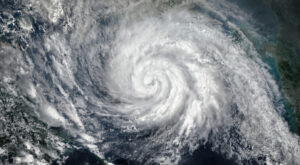Mise en place your crisis prep: A flexible framework for the worst
Using the IHELP model of crisis communications planning.

When it comes to creating your crisis communications plan, it can be tempting to make a massive, 300-page binder that covers every possible bad thing that can happen to your organization, from the CEO stubbing her toe to an asteroid striking your processing plant.
But Liz McGee, communications director at the Institute of International Finance and upcoming speaker at PR Daily’s Media Relations Pre-Conference, says there’s an easier way.
She encourages communicators to think of themselves as chefs preparing for the evening rush by preparing their mise en place — that’s ensuring all the ingredients are clean, cut and ready to be put into a dish.
“Instead of thinking about scripts and myriad templates, it’s more so, what are the key ingredients and tools that I’m going to need in the moment so I can respond quickly and effectively,” she told PR Daily.
Instead of prepping for any crisis, prep by category
Even the most morbidly creative person won’t be able to think of every disaster that might befall an organization.
But in McGee’s experience, almost all crises can be divided into one of six different categories. She calls this the IHELP model:
Information security: Think security breaches, AI disasters, hacks, cyberattacks and more. McGee predicts many of the biggest crises in the next five years will come through this category, including through AI dis- and misinformation campaigns.
Health and safety: This includes crises of physical safety, from natural disasters to active shooters to pandemics to workplace accidents.
Ethics and politics: Maybe a presidential candidate mentions your organization in a not-so-flattering way on the campaign trail or a boycott erupts. That’s this category.
Legal and regulatory: The other side of the political coin, this is when members of the government aren’t just talking about you, they’re making laws that impact you. This could be Congress trying to ban your app in the United States unless you divest, a new regulation mandating the disclosure of all fees and so on.
Performance and product: So, it turns out your hoverboards burst into flames. Or your stock price tanks due to low earnings. These are problems.
McGee says that rather than planning for any individual scenario, you instead need to plan for these large-scale buckets.
“Every organization, every industry is going to have different needs,” McGee said. “They’re going to have different deliverables depending on what your C-suite wants, what your regulators want. But at the end of the day, I have yet to encounter a crisis that didn’t fall under at least one of these categories.”
Once you have those broad-based categories in place, look to the past as a prediction of the future to help narrow down the fields to the most likely events rather than planning for a few black swan disasters.
“You want to ask, what are the biggest communication crises that my organization has had in the last 10 years?” McGee said. “I think that’s something that a lot of people tend to miss or skip over when they start a job is thinking about what your predecessor has faced, or what you have faced in the past? And the same thing with your competitor or peer organizations.”
She also recommends sitting down with your legal department, your HR department and other internal stakeholders and asking what keeps them up at night, as well as looking at the political landscape to see where your vulnerabilities lie.
This will give you a much better idea of what crises are likely rather than going into a massive brainstorm where everyone tries to think of all the outlandish scenarios that could happen.
But it’s critical to define what a crisis actually is. It’s not just some event that had the comms team running around madly.
“If it doesn’t impact your bottom line, it’s not a crisis,” McGee said flatly.
Prepping the response
So now you have identified the most likely events to happen in a handful of categories. In other words, you’ve set the menu, but now you can go about preparing your mise en place.
This can include:
- Contact information for people who will have critical answers you’ll need.
- Approval trees of who needs to sign off on communications.
- Identifying spokespeople.
- Backups, including contact information, for all these.
- Regular reporters you work with who might help share your story in a crisis.
- Other relevant reporters you may need in a crisis.
- What information will they need if something goes wrong? Think the five Ws. You won’t have the answers, but you can create a checklist.
But remember, you’re focused on prepping ingredients right now, not the final product. If you have eggs, cheese and bacon, you could make an omelet. But you could also make a souffle. You’re going to need this information, even if the final form differs from what you initially envisioned.
Prepping measurement
Naturally, you’re already measuring benchmark KPIs even when there’s no crisis in sight. But during a crisis, you’ve got to ensure that you’re layering business KPIs on top of your communications measurements. Otherwise, you could wind up with a skewed picture of the final results.
“Maybe I only get one story written about my crisis, but it’s a huge story in The New York Times and it tanks my share price,” McGee said. “That’s not an effective crisis response, right? Even though I have the data that says, ‘Oh, well, it was only one article.’ “
Regardless of your business model, always consider the broader business implications of a crisis. That’s where communication really proves its worth.
Allison Carter is editor-in-chief of PR Daily. Follow her on X or LinkedIn.







